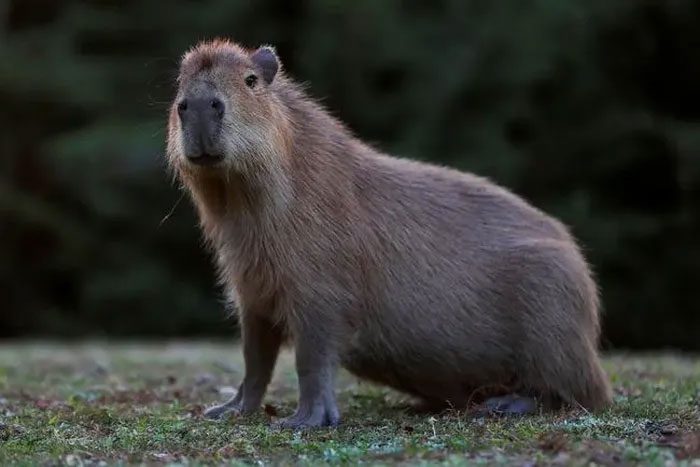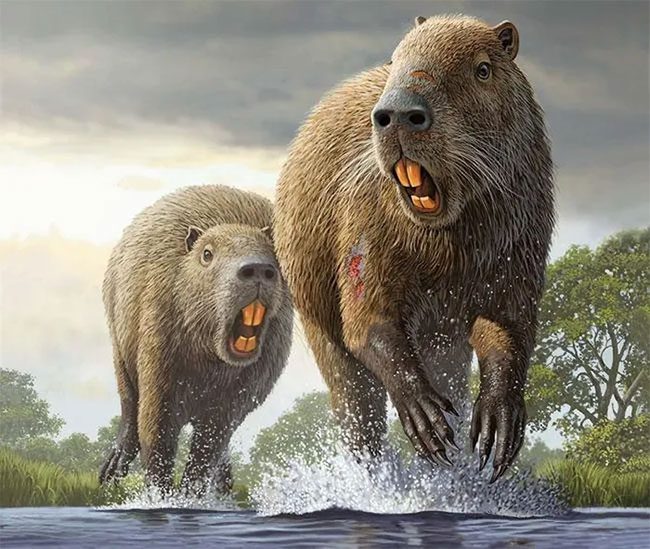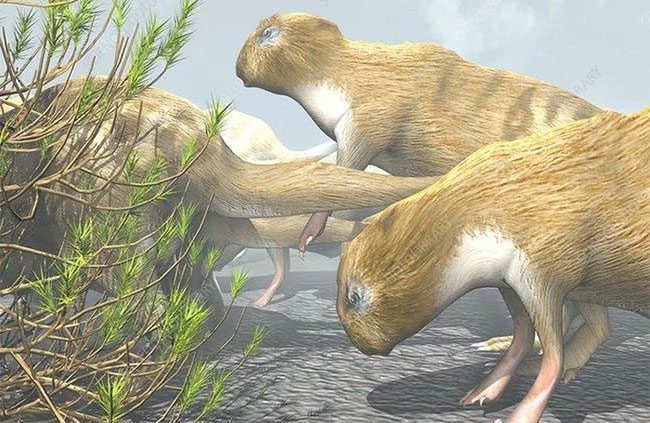A new study reveals that some prehistoric rodent species were estimated to be the size of a bison, and even comparable to modern-day foals.
This conclusion was presented in a recent research article published in the scientific journal Royal Society Open Science. When we think of rodents, we often envision small, insignificant creatures. For instance, the pygmy mouse weighs only 28 grams, while the largest rodent species, the capybara, can weigh up to 79.4 kilograms.

Image of a capybara.
However, even the largest capybara today seems small compared to some prehistoric rodents. According to scientists’ research, these prehistoric rodents were surprisingly gigantic, resembling a hybrid between oversized capybaras and hairy hippos.
According to the New York Times, paleontologists estimate that a rodent known as Phoberomys pattersoni could weigh up to 590 kilograms. Another rodent, Josephoartigasia monesi, weighed around 907 kilograms, comparable to a bison.

Reconstruction of the size of Josephoartigasia monesi – a giant prehistoric rodent that once lived on Earth.
However, predictions about the size of this species have long sparked debate. Paleontologist Russell Engelman from Case Western Reserve University stated: “People have said they were the size of bison, but no one had any method to confidently prove that these sizes were real.”
Therefore, Engelman proposed a new method to accurately describe the size of these unusually large rodents.
In a study published on Wednesday (August 15) in the journal Royal Society Open Science, he calculated size by comparing a joint at the back of the skull of the Phoberomys, Josephoartigasia, and other prehistoric rodents with those of large mammals alive today.

From 2 million to 8 million years ago, giant rodents like Phoberomys and Josephoartigasia lived in the wetlands of South America.
According to Ernesto Blanco, a paleontologist at the Universidad de la República in Uruguay, who discovered the skull of a Josephoartigasia in 2008, this giant rodent had a bite force three times stronger than that of a modern tiger, protecting it from predators such as birds and saber-toothed mammals.
Most of today’s understanding of these rodents revolves around their size.
“Body size is an important characteristic of mammals because everything you cannot physically measure in fossils, such as ecology and physiology, correlates with body size,” said Virginie Millien, a zoologist at McGill University, who studies body size in rodents and is not involved in the new research.
In 2010, Dr. Millien used fossils of females to estimate that the Phoberomys species was the size of a large antelope.
Determining the exact size of these giant rodents has been challenging. One reason is the lack of fossils.
Paleontologists have excavated leg bones and other fragments from the skeleton of the Phoberomys, while the Josephoartigasia has only one skull available for study.
Without fossil evidence, researchers often rely on the anatomy of the closest living relatives of extinct animals.
Thus, Engelman used the occipital condyle, the joint connecting the skull to the spine. The size of this joint varies little across all mammals, ensuring that the skull and spine remain connected. Therefore, it serves as a basis for comparing different species.
Recently, Engelman measured the width of this joint in over 400 mammal species, including mice and African elephants.
From this, he found that the width of the occipital condyle is an accurate indicator of their size. Since the joint width in similarly sized mammals is equivalent, Engelman could compare the joint size of prehistoric rodents with other mammals.
The result was a significant reduction in previous size estimates made by other researchers. Accordingly, the Phoberomys weighed a maximum of 204 kilograms, while the Josephoartigasia weighed about 454 kilograms, closer to the size of a horse, rather than a bison with a mass nearing 1 ton.





















































